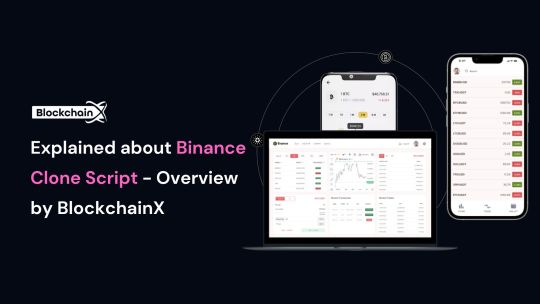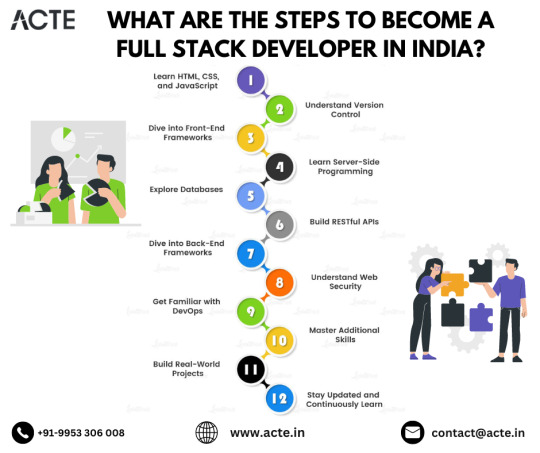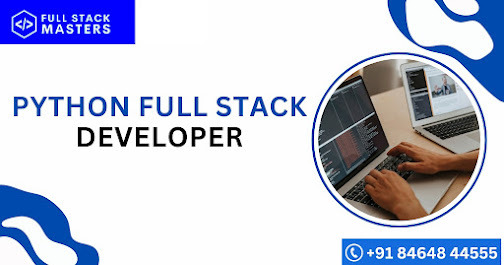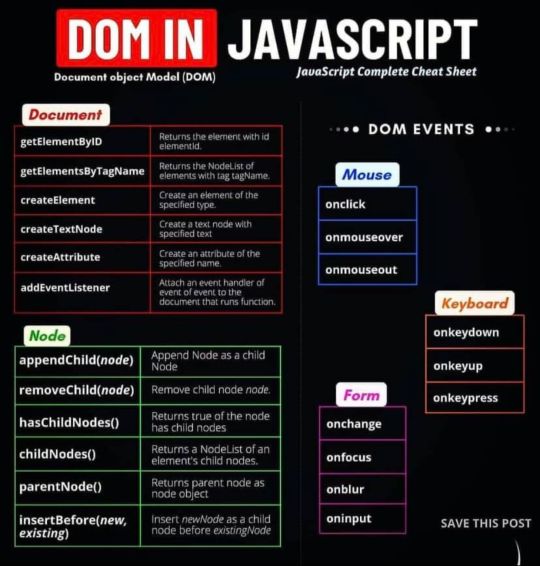#Angular for startups
Explore tagged Tumblr posts
Text
React vs. Angular

React and Angular are both popular JavaScript frameworks for front-end development. React is lightweight and flexible, while Angular is a complete solution with a steeper learning curve. Ultimately, the best framework to pick depends on the project requirements, team expertise, and development goals.
#business#reactjs#reactnative#angular#startup#reactjs development company#hire reactjs developers#reactjs development services#reactjs developers#nodejs#nodejs development#nodejs development company#hire nodejs developer#node js developers#javascript
2 notes
·
View notes
Text
Master Web Development Training in Chandigarh with Devex Hub
Embark on a transformative journey in web development training in Chandigarh with Devex Hub. Our curriculum covers important emerging areas of web development involving, CORE PHP, LARAVEL, CODEIGNITER, SHOPIFY, ANGULAR JS, NODE JS, REACT JS, and more. Experience hands-on learning and expert guidance to propel your career forward in the digital landscape. Start your path to success today!

#web development#web developers#user interface#web design#web designing#web development course#machine learning#marketing#startup#career#course#career guidance#ux desgin#core php#laravel#codeigniter#shopify#shopify developer#angular js#javascript#javaprogramming#nodejs#reactjs
1 note
·
View note
Text
Elevate your startup's performance with Angular. Find out how this framework can give you the upper hand in a dynamic market.
0 notes
Text
Our mission is to deliver industry-oriented training with foundational knowledge for a boundless success.
0 notes
Text
Build a Real-Time Chat Application with Angular and Firebase

Introduction
In today's fast-paced digital world, real-time communication is becoming increasingly important. This is especially true for businesses looking to enhance their customer service experience and increase customer satisfaction. Building a real-time chat application with Angular and Firebase can help businesses achieve these goals by providing a seamless and efficient communication channel.
According to a recent study, businesses that use real-time chat see a 20% increase in conversions compared to those that don't. This statistic alone highlights the importance of real-time chat in today's digital landscape.
One use case of a real-time chat application is for customer support. For instance, customers can reach out to businesses through chat, and support agents can respond in real-time, leading to faster issue resolution and improved customer satisfaction.
When it comes to building a real-time chat application, Angular and Firebase are the perfect combination. Angular provides a robust and scalable front-end framework, while Firebase offers a powerful back-end platform with real-time database capabilities.
So, if you're looking to build a real-time chat application, keep reading to learn how to do it with Angular and Firebase. And don't worry, you don't need to be a coding expert to follow along!
Setting Up Your Angular Development Environment
Setting up your Angular development environment is the first step to building a real-time chat application with Angular and Firebase. Before you begin, it's important to note that Angular is one of the most popular front-end frameworks used today, with over 1.5 million websites currently built with it. Furthermore, Angular is constantly evolving, with regular updates and new features being added to keep up with the latest web development trends.
To get started with your development environment, you'll need to install Node.js and Angular CLI. Once installed, you can use the CLI to generate a new Angular project and start building your real-time chat application.
One use case for building a real-time chat application with Angular and Firebase is for online communities. Online communities can benefit greatly from real-time chat functionality, as it allows for members to communicate with each other in real-time and build stronger connections.
Here's a humorous take on setting up your development environment: "Setting up your Angular development environment is like putting together a puzzle. It might seem confusing at first, but with the right pieces in place, you'll have a beautiful masterpiece in no time!"
In summary, setting up your Angular development environment is a crucial first step in building a real-time chat application with Angular and Firebase. By doing so, you'll be able to take advantage of Angular's powerful front-end capabilities and Firebase's real-time database functionality.
Building the User Interface for Your Real-Time Chat Application
Building the user interface for your real-time chat application is an important step to ensure a seamless user experience. It's crucial to design a user interface that is intuitive and easy to use, especially for real-time communication where users need to quickly and efficiently send messages.
According to a recent study, 38% of users will stop engaging with a website if the layout and design are unattractive. Therefore, it's important to invest time and effort into designing a user interface that is visually appealing and user-friendly.
High-volume keywords for this step include "Angular Material Design" and "user interface design best practices". Angular Material Design is a popular design framework that offers pre-built UI components that can be easily integrated into your Angular application. Furthermore, following user interface design best practices such as using clear and concise language and minimizing clutter can greatly improve the user experience.
One use case for a real-time chat application with a well-designed user interface is for team collaboration. For instance, team members can communicate with each other in real-time and stay up-to-date on project progress.
Here's a humorous take on building the user interface: "Designing a user interface is like creating a work of art. You want it to be visually appealing and functional, but you also don't want it to look like a toddler's finger painting!"
In summary, building a user interface that is visually appealing and user-friendly is crucial for building a real-time chat application with Angular and Firebase. By doing so, you'll be able to ensure a seamless user experience and improve user engagement.
Integrating Firebase Realtime Database with Your Angular Application
Integrating Firebase Realtime Database with your Angular application is an essential step in building a real-time chat application. Firebase Realtime Database is a cloud-hosted NoSQL database that allows you to store and sync data in real-time. It's a popular choice for real-time applications due to its scalability and ease of use.
According to recent statistics, Firebase is used by over 2 million developers worldwide and has over 1 million registered applications. Furthermore, Firebase Realtime Database has been used by popular applications such as Shazam and Alibaba.
High-volume keywords for this step include "Firebase Realtime Database", "Angular Firebase integration", and "NoSQL databases". Integrating Firebase Realtime Database with your Angular application involves setting up a Firebase project, configuring Firebase authentication, and implementing Firebase Realtime Database into your Angular code.
One use case for integrating Firebase Realtime Database with your Angular application is for real-time customer support. For instance, a company can use a real-time chat application to provide instant support to their customers and resolve issues quickly.
Here's a humorous take on integrating Firebase Realtime Database with your Angular application: "Integrating Firebase Realtime Database with your Angular application is like having a personal assistant. It helps you keep track of everything in real-time, so you can focus on the more important things in life."
In summary, integrating Firebase Realtime Database with your Angular application is a crucial step in building a real-time chat application. By doing so, you'll be able to take advantage of Firebase's real-time sync functionality and improve the scalability of your application.
Implementing Authentication and Security in Your Real-Time Chat Application.
Implementing authentication and security is crucial for any real-time chat application to ensure that users' data and privacy are protected. Firebase provides several authentication options, including email and password authentication, Google authentication, and Facebook authentication.
According to recent statistics, security is a top concern for users of online services, with 69% of users being concerned about the security of their personal data. Therefore, it's important to prioritize security when building a real-time chat application.
High-volume keywords for this step include "Firebase authentication", "Angular security best practices", and "real-time chat application security". Implementing authentication and security in your real-time chat application involves configuring Firebase authentication, enforcing secure communication protocols, and implementing secure coding practices.
One use case for implementing authentication and security in your real-time chat application is for telehealth services. For instance, a telehealth application can use real-time chat to provide instant support to patients, but it's crucial to ensure that patient data is protected and only accessed by authorized individuals.
Here's a humorous take on implementing authentication and security: "Implementing authentication and security in your real-time chat application is like setting up a bouncer at a club. You want to make sure only authorized individuals get in, and no one sneaks in through the back door!"
In summary, implementing authentication and security is a crucial step in building a real-time chat application with Angular and Firebase. By doing so, you'll be able to ensure that user data and privacy are protected and improve user trust and engagement.
Adding Additional Features and Improving User Experience.
Adding additional features and improving user experience are essential for any real-time chat application to keep users engaged and interested. Some popular features to consider adding include file sharing, emojis, and group chat.
According to recent statistics, user experience is a critical factor in determining user engagement and retention, with 88% of users being less likely to return to a site after a bad user experience. Therefore, it's crucial to prioritize user experience when building a real-time chat application.
High-volume keywords for this step include "Angular user experience", "real-time chat application features", and "improving chat application user engagement". Adding additional features and improving user experience in your real-time chat application involves incorporating user feedback, conducting user testing, and implementing design best practices.
One use case for adding additional features and improving user experience in your real-time chat application is for online gaming communities. For instance, a gaming community can use real-time chat to facilitate communication between players and add features like custom emojis and group chat to enhance the overall gaming experience.
Here's a humorous take on adding additional features and improving user experience: "Adding additional features and improving user experience in your real-time chat application is like adding toppings to a pizza. It makes it more enjoyable and keeps users coming back for more!"
In summary, adding additional features and improving user experience is a crucial step in building a real-time chat application with Angular and Firebase. By doing so, you'll be able to enhance user engagement, improve user retention, and increase overall satisfaction.
Conclusion
In conclusion, building a real-time chat application with Angular and Firebase is a challenging but rewarding process. By following the steps outlined in this guide, including setting up your development environment, configuring Firebase and Angular, implementing real-time communication, incorporating authentication and security, and adding additional features and improving user experience, you'll be able to create a robust and engaging real-time chat application that meets your users' needs.
According to recent statistics, the demand for real-time chat applications continues to grow, with an estimated 2.7 billion users expected to be using messaging apps by 2023. Therefore, building a real-time chat application with Angular and Firebase is not only a great way to provide value to your users but also to stay ahead of the curve in a competitive market.
High-volume keywords for this conclusion and call to action include "Angular and Firebase development", "real-time chat application trends", and "custom software development company". If you're a business looking to build a real-time chat application, consider partnering with a custom software development company with expertise in Angular and Firebase to help you create a high-quality application that meets your business needs and user expectations.
One use case for a custom software development company building a real-time chat application is for customer support services. For instance, a customer support chatbot that uses real-time chat to communicate with customers can help businesses provide 24/7 support and improve customer satisfaction.
Here's a humorous take on the call to action: "If you want to build a real-time chat application with Angular and Firebase, but your coding skills are a bit rusty, don't worry! Just find a good developer, buy them a coffee, and let them do the coding while you sip your latte."
Building a real-time chat application with Angular and Firebase is an exciting opportunity to provide value to your users and stay ahead of the curve in a growing market. If you're a business looking to build a real-time chat application, consider partnering with a custom software development company to help you create a high-quality application that meets your business needs and user expectations.
Reference Links
For the estimated 2.7 billion users expected to be using messaging apps by 2023: https://www.statista.com/statistics/483255/number-of-mobile-messaging-users-worldwide/
For the popularity of real-time chat applications: https://www.business2community.com/mobile-apps/real-time-chat-applications-statistics-you-need-to-know-02211372
For the importance of real-time communication in customer support: https://www.forbes.com/sites/quora/2018/08/08/why-real-time-chat-matters-for-customer-service/?sh=547eb9d8785b
For more information or queries regarding any software development services, you can contact us.
#webdevelopment#business#coding#programming#softwaredevelopment#softwaredeveloper#software#tech#technology#frontend#angular#firebase#appdevelopment#startup#enterprise#developer#softwareservices
1 note
·
View note
Text
New start
Gaz sat crying on the shabby sofa bed in his one-bedroom apartment in the run-down social housing building. He must not have cried in 20 or 30 years. But now he was at the end of his rope. It couldn't get any worse. His wife had separated from him a few weeks ago. Their son together, conceived during the only sex of his life, had followed his destiny and at the age of 15 was already regularly hanging out drunk at the bus stop with his unemployed friends. He had dropped out of school a long time ago.
The bailiff had just come and seized his TV, cell phone and his grandfather's wristwatch. Gaz was at the bottom. Way down. And he had not only ruined his life. But also at least that of his wife and son. He had known he was gay for 17 years. He had never been able to confide in anyone. In a drunken stupor he had sex with his wife, who promptly became pregnant and whom he had married out of some residual decency.

And now he had a photo in his hands, which his wife had put on the kitchen table for him to say goodbye without comment. Gaz already quite drunk in the arms of his buddies. Kyle, to his knowledge, had been dead for two years. Drunk to death. And at some point during the evening, he had been fired up to fuck the already pretty drugged Vicky. And shit, that's what he had done. Already that evening his life was on the line. After that it went at top speed into the abyss.
Now he had howling this picture, with which his fate had been sealed, in the hands. Damn it, if only he had had the guts to come out earlier. He had actually been athletic in elementary school. And good at math. When on God's earth had it all turned around? The image began to change… His spongy features became more angular. The glazed look became a radiant smile. And the radical short haircut became a pink-dyed blow-dry. Yes, he could still remember the evening well. There had been report cards that day, and he had graduated at the top of his class. He had a scholarship for an elite boarding school in his pocket. And he was dating his first boyfriend at the time. Quite cliché, it was the barber in the settlement. Shit, he looked gay back then with the pink hair. But he was in love, and the two had fucked like rabbits. Since then, Gareth got a hard-on every time he went to the barbershop.
The lads were good lads. They were all a bit empty headed. He hardly kept in touch with any of them anymore. Kyle he had hired as a gardener and janitor at one point. Since then, they saw each other regularly at his country estate. And as far as Gareth could tell, Kyle had been clean and sober ever since. That had also been the night he had taken Vicky home. My God, the poor thing was completely drunk. She'd probably been given knockout drops, too. And either that night or just before, she had been knocked up. In any case, she was probably pregnant that night. His parents had taken Vicky in lovingly. Since he was going to boarding school soon, she had been given his room. When he was there on vacation, the two of them had shared the room. And when Jacob was born, his parents soon adopted him. Until then, Gareth had been an only child; on that fateful evening, he had been given an older sister and a younger brother.
Boarding school had been a tough time. He was the chav, everyone else was from a rich home. But he was hardworking, smart and ambitious. Soon he was captain of the rugby team. And his math teacher recognized his talent for software development. Gareth founded his first small startup while still at school. And when he exited four years later, he earned his first millions.

Gareth sat in the study of his townhouse in a side street of Marylebone High Street. Sweet that Victoria had sent him the picture from that evening. That was, in fact, almost 16 years ago now. But even though some circumstances were tragic, looking back, it was one of the best evenings of their lives ever for her, Jacob and him. Victoria was the best business partner he could have imagined. And Jacob had followed in his footsteps at his old school very successfully. At that moment, Ivo came to the door. Heck, his husband already knew how to keep him from working. The muscle stud had nothing on but an apron. And carried a silver tray with a leather gag in front of him. "Your lordship, it's time to call it a day," Ivo said in an overly stilted manner. Today Gareth would get the gag in his mouth.
61 notes
·
View notes
Text
Binance clone script — Overview by BlockchainX
A Binance Clone Script is a pre-built, customizable software solution that replicates Binance's features, connect with BlockchainX

What is Binance Clone Script
A Binance clone script refers to the ready-made solution of the Binance platform that deals with core functions parallel to the widely acclaimed cryptocurrency exchange platform associated with Binance. It enables companies to establish their own platforms like Binance, perfectly parameterized in terms of functionality and user interface of world-famous exchanges. The clone script provides display flexibility with built-in functionality such as spot trading software, futures trading configurations, and wallet systems that are extremely secure.
Basically, it reduces development costs and latency because things like these are already built. And as this is a startup for many young entrepreneurs, they can have saved on their capital to expand or grow their business.
The script is blessed as its feature set caters to future demands in the field. One can enjoy a safe trading experience to customers while ensuring that every peculiarity of Binance’s success opens up to investors of the script.
How does the Binance clone script work?
The Binance clone script works to provide a ready-made platform that replicates Binance’s core features, such as user registration, wallet management, trade and enables users to create accounts, deposit or withdraw cryptocurrency, and trade digital assets through an interface easily and safely. The platform supports various trading methods such as market orders, limit orders and forward trading. It has built-in security features like two-factor authentication (2FA) to save the user money. Admin dashboards allow platform owners to manage users, manage tasks, and set up billing. The script can be tailored to your brand, connecting liquidity sources to make trading more efficient. In short, the Binance clone script provides everything needed to create a fully functional crypto exchange.
key features of a Binance Clone Script
The key features of a Binance Clone Script are designed to make your cryptocurrency exchange platform secure, user-friendly, and fully functional. Here’s a simple overview of these features:
User-Friendly Interface
Multi-Currency Support
Advanced Trading Engine
Secure Wallet System
KYC/AML Integration
Admin Dashboard
Security Features
Trading Options
These features help ensure that your Binance-like exchange is efficient, secure, and ready for the growing crypto market.
Technology Stack Used by BlockchainX
Technology stack used for developing the Binance clone script involves the most advanced technology combination that ensures that the platform must have so much security, scalability, and performance to make it a platform that is secure, scalable, and high-performance as well. Here are a few key technologies and their brief descriptions:
Blockchain Technology:
The underlying part of the cryptocurrency exchange is Blockchain because it ensures the safe and decentralized processing of transactions.
Normally executed on either Ethereum or BSC (Binance Smart Chain) to carry out smart contracts and token transfers.
Programming Languages:
Frontend: For frontend, React or Angular could be engaged in actualization of the user interface leading to a responsive and interactive experience on the various devices.
Backend: In backend, languages like Node.js, Python, or Ruby on Rails can be applied on how internal logic is being run by server and arbitration of user interaction with the module is foremost.
Databases:
These two databases, MySQL or Postgresql, are typically used in user information storage, transaction records, and other exchange information.
NoSQL such as MongoDB or other databases might be used for horizontal scalability and high-volume transaction storage.
Smart Contracts:
It is used to generate and send out smart contracts for auto-trading, token generation, and other decentralized functionalities.
Blockchain Wallets:
Fundamentally, this automatically links famous wallet systems such as MetaMask, Trust Wallet, or Ledger for the secure storage and transactions of cryptocurrency.
Advantages of using a Binance Clone Script
Here are the advantages of using a Binance Clone Script:
Faster Time-to-Market
Cost-Effective
Customizable Features
Liquidity Integration
Multiple Trading Options
So, when entering the marketplace of the cryptocurrencies it would be the most possible work of something to pay off at a rapid pace: the Binance Clone Script proves so.
How to Get Started with BlockchainX’s Binance Clone Script
It is quite a straightforward process to begin working with a BlockchainX Binance Clone Script-this involves the first step of getting in touch with the company for an initial consulting period to understand more about what you require, need, or customize for the site, and what your goals are. When BlockchainX has an understanding of your needs, they offer a detailed list of what a proposal would entail before they can start the work; afterward, they will estimate the costs needed to do the project. Once both sides accept both the presentations and all features and timelines are agreed with, BlockchainX starts working on the development process of building a Binance Clone Script tailored to the brand, user interface, and other features.
After the entire platform is created, it passes through severe testing to ensure that everything functions excellently. Deployment follows the thorough test. BlockchainX customizes your user interface and more extensions, after deployment. BlockchainX also commits to supporting and sustaining your exchange so that it runs successfully and securely.
Conclusion:
At the end, your confusion may as well be cut short. Yes, the Binance Clone Script will be a resilient solution to spark up the exchange platforms synthesizing user-generated cryptocurrency dreams in the blockchain, even without bankroll when it comes to developing the app. Turning with BlockchainX expertise, you can make an adjustment and scale a powerful platform stocked with the likes of Binance that produced Blockchains, while still containing some specific set-ups for your masterpiece. More amazing features are exclusive to the clone script, moreover, such as support for multiple currencies, high-end security, real-time data, and a smooth user interface that completes the trading process for your users without any glitch.
This solution gives easy access to ready-made solutions. It could have quality Depending on the time you conveniently let BlockchainX’s be and use both exchanges or any variation of the two permutations. After all, who decides to couple up with a one-experienced Crypto Exchange developer who is struggling to offer anything new.
#binance clone script#binance clone script development#binance clone script development service#blockchain technology#blockchain#cryptocurrency#cryptocurrencies
2 notes
·
View notes
Text
Finding a Good Web Developer in Stamford
In today’s digital age, having a strong online presence is crucial for businesses of all sizes. Whether you're a startup or an established enterprise, hiring a skilled web developer can significantly impact your success. If you're located in Stamford and looking to enhance your website or create a new one, here are some essential tips to help you find the right web developer for your needs
Define Your Project Requirements Before you start your search, it's important to have a clear understanding of what you need. Are you looking for a simple informational website, a complex e-commerce platform, or a custom web application? Defining your project requirements will help you communicate effectively with potential developers and ensure you find someone with the right expertise
Look for Local Talent Stamford has a vibrant tech community, making it easier to find local web developers. Consider attending local meetups, tech events, or networking gatherings to connect with professionals in the area. This not only helps you find potential candidates but also allows you to gauge their skills and expertise through personal interactions
Check Portfolios and Previous Work A web developer’s portfolio is a crucial indicator of their skills and style. Look for developers who have experience in your industry or who have worked on projects similar to yours. Reviewing their previous work can give you insights into their creativity, technical abilities, and overall quality of work
Read Reviews and Testimonials Don’t just take a developer's word for it—check online reviews and testimonials from previous clients. Platforms like Google, Clutch, or even social media can provide valuable feedback about a developer's reliability, communication skills, and project management capabilities. Look for developers who have consistently positive reviews and a solid reputation in the Stamford community
Evaluate Technical Skills Web development encompasses a range of skills, from front-end design to back-end programming. Depending on your project, you may need a developer who is proficient in specific technologies such as HTML, CSS, JavaScript, PHP, or frameworks like React or Angular. Ensure that the developers you consider have the technical skills necessary to meet your project requirements
Communication is Key A successful web development project relies heavily on clear communication. During initial discussions, pay attention to how well the developer listens to your ideas and concerns. A good developer should be able to explain technical concepts in a way that you can understand and should be open to feedback throughout the development process
Discuss Budget and Timelines Before committing to a developer, discuss your budget and project timelines upfront. Be honest about what you can afford and ask for a detailed breakdown of costs. Additionally, establish clear deadlines to ensure that the project stays on track. A reputable developer will provide you with a realistic timeline and work within your budget
Consider Ongoing Support Web development doesn’t end once your site goes live. Look for developers who offer ongoing support and maintenance services. This can include regular updates, bug fixes, and security monitoring. Having a reliable developer available for future needs can save you time and stress down the line Conclusion Finding a good web developer in Stamford requires careful consideration and research. By defining your project needs, exploring local talent, reviewing portfolios, and ensuring effective communication, you can find a developer who aligns with your vision and goals. Investing time in this process will pay off, resulting in a high-quality website that effectively represents your brand and engages your audience.
2 notes
·
View notes
Text
Which is better full stack development or testing?

Full Stack Development vs Software Testing: Which Career Path is Right for You?
In today’s rapidly evolving IT industry, choosing the right career path can be challenging. Two popular options are Full Stack Development and Software Testing. Both of these fields offer unique opportunities and cater to different skill sets, making it essential to assess which one aligns better with your interests, goals, and long-term career aspirations.
At FirstBit Solutions, we take pride in offering a premium quality of teaching, with expert-led courses designed to provide real-world skills. Our goal is to help you know, no matter which path you choose. Whether you’re interested in development or testing, our 100% unlimited placement call guarantee ensures ample job opportunities. In this answer, we’ll explore both career paths to help you make an informed decision.
Understanding Full Stack Development
What is Full Stack Development?
Full Stack Development involves working on both the front-end (client-side) and back-end (server-side) of web applications. Full stack developers handle everything from designing the user interface (UI) to managing databases and server logic. They are versatile professionals who can oversee a project from start to finish.
Key Skills Required for Full Stack Development
To become a full stack developer, you need a diverse set of skills, including:
Front-End Technologies: HTML, CSS, and JavaScript are the fundamental building blocks of web development. Additionally, proficiency in front-end frameworks like React, Angular, or Vue.js is crucial for creating dynamic and responsive web interfaces.
Back-End Technologies: Understanding back-end programming languages like Node.js, Python, Ruby, Java, or PHP is essential for server-side development. Additionally, knowledge of frameworks like Express.js, Django, or Spring can help streamline development processes.
Databases: Full stack developers must know how to work with both SQL (e.g., MySQL, PostgreSQL) and NoSQL (e.g., MongoDB) databases.
Version Control and Collaboration: Proficiency in tools like Git, GitHub, and agile methodologies is important for working in a collaborative environment.
Job Opportunities in Full Stack Development
Full stack developers are in high demand due to their versatility. Companies often prefer professionals who can handle both front-end and back-end tasks, making them valuable assets in any development team. Full stack developers can work in:
Web Development
Mobile App Development
Enterprise Solutions
Startup Ecosystems
The flexibility to work on multiple layers of development opens doors to various career opportunities. Moreover, the continuous rise of startups and digital transformation initiatives has further fueled the demand for full stack developers.
Benefits of Choosing Full Stack Development
High Demand: The need for full stack developers is constantly increasing across industries, making it a lucrative career choice.
Versatility: You can switch between front-end and back-end tasks, giving you a holistic understanding of how applications work.
Creativity: If you enjoy creating visually appealing interfaces while also solving complex back-end problems, full stack development allows you to engage both creative and logical thinking.
Salary: Full stack developers typically enjoy competitive salaries due to their wide skill set and ability to handle various tasks.
Understanding Software Testing
What is Software Testing?
Software Testing is the process of evaluating and verifying that a software product or application is free of defects, meets specified requirements, and functions as expected. Testers ensure the quality and reliability of software by conducting both manual and automated tests.
Key Skills Required for Software Testing
To succeed in software testing, you need to develop the following skills:
Manual Testing: Knowledge of testing techniques, understanding different testing types (unit, integration, system, UAT, etc.), and the ability to write test cases are fundamental for manual testing.
Automated Testing: Proficiency in tools like Selenium, JUnit, TestNG, or Cucumber is essential for automating repetitive test scenarios and improving efficiency.
Attention to Detail: Testers must have a keen eye for identifying potential issues, bugs, and vulnerabilities in software systems.
Scripting Knowledge: Basic programming skills in languages like Java, Python, or JavaScript are necessary to write and maintain test scripts for automated testing.
Job Opportunities in Software Testing
As the demand for high-quality software increases, so does the need for skilled software testers. Companies are investing heavily in testing to ensure that their products perform optimally in the competitive market. Software testers can work in:
Manual Testing
Automated Testing
Quality Assurance (QA) Engineering
Test Automation Development
With the rise of Agile and DevOps methodologies, the role of testers has become even more critical. Continuous integration and continuous delivery (CI/CD) pipelines rely on automated testing to deliver reliable software faster.
Benefits of Choosing Software Testing
Job Security: With software quality being paramount, skilled testers are in high demand, and the need for testing professionals will only continue to grow.
Quality Assurance: If you have a knack for perfection and enjoy ensuring that software works flawlessly, testing could be a satisfying career.
Automated Testing Growth: The shift toward automation opens up new opportunities for testers to specialize in test automation tools and frameworks, which are essential for faster releases.
Flexibility: Testing provides opportunities to work across different domains and industries, as almost every software product requires thorough testing.
Full Stack Development vs Software Testing: A Comparative Analysis
Let’s break down the major factors that could influence your decision:
Factors
Full Stack Development
Software Testing
Skills
Proficiency in front-end and back-end technologies, databases
Manual and automated testing, attention to detail, scripting
Creativity
High – involves creating and designing both UI and logic
Moderate – focuses on improving software through testing and validation
Job Roles
Web Developer, Full Stack Engineer, Mobile App Developer
QA Engineer, Test Automation Engineer, Software Tester
Career Growth
Opportunities to transition into senior roles like CTO or Solution Architect
Growth towards roles in automation and quality management
Salary
Competitive with wide-ranging opportunities
Competitive, with automation testers in higher demand
Demand
High demand due to increasing digitalization and web-based applications
Consistently high, especially in Agile/DevOps environments
Learning Curve
Steep – requires mastering multiple languages and technologies
Moderate – requires a focus on testing tools, techniques, and automation
Why Choose FirstBit Solutions for Full Stack Development or Software Testing?
At FirstBit Solutions, we provide comprehensive training in both full stack development and software testing. Our experienced faculty ensures that you gain hands-on experience and practical knowledge in the field of your choice. Our 100% unlimited placement call guarantee ensures that you have ample opportunities to land your dream job, no matter which course you pursue. Here’s why FirstBit is your ideal training partner:
Expert Trainers: Learn from industry veterans with years of experience in development and testing.
Real-World Projects: Work on real-world projects that simulate industry scenarios, providing you with the practical experience needed to excel.
Job Assistance: Our robust placement support ensures you have access to job openings with top companies.
Flexible Learning: Choose from online and offline batch options to fit your schedule.
Conclusion: Which Career Path is Right for You?
Ultimately, the choice between full stack development and software testing comes down to your personal interests, skills, and career aspirations. If you’re someone who enjoys building applications from the ground up, full stack development might be the perfect fit for you. On the other hand, if you take satisfaction in ensuring that software is of the highest quality, software testing could be your calling.
At FirstBit Solutions, we provide top-notch training in both fields, allowing you to pursue your passion and build a successful career in the IT industry. With our industry-aligned curriculum, expert guidance, and 100% placement call guarantee, your future is in good hands.
So, what are you waiting for? Choose the course that excites you and start your journey toward a rewarding career today!
#education#programming#tech#technology#training#python#full stack developer#software testing#itservices#java#.net#.net developers#datascience
2 notes
·
View notes
Text
#dotnet #angular #reactjs #MVP #startup #dotnetcore #softwaredevelopment #SCRUM
2 notes
·
View notes
Text




Tuesday O. Wallace was the previous alpha mascot for my Tumblr, before I fully made the switch over to MM, which has since settled into a Maxis Mix vibe.
Anyways, more info on her below!
Like Wren, Tuesday is an older character concept, coming into my brain in the late fall of 2020. She was an affair baby, her mom slept with her very married boss when she worked as an office admin at a tech startup (that later became a hella successful company). She has a total of 6-half siblings, two older from her father's marriage (that somehow survived the blatant adultery) and four younger from her mother's later marriages.
She coped with her chaotic upbringing with chain-smoking, playing the guitar, daydreaming about moving to de-Mothered StrangerVille, and a close friendship with her elderly next-door neighbor Lorene.
Tuesday will also be a part of this little story idea that I've been calling Another Door.
Compared to Wren, I changed fairly little in Tuesday's appearance, just made her eyes bigger, made the irises a more golden brown, and made her mouth just a bit less frowny and angular. She's still one of my more gaunt-faced sims, still on the tall end, and still takes after her likewise curvy mom.
Tuesday and Wren have never lived in the same universe before, and it's interesting to write how they get along, something that others will hopefully get to see (assuming I don't get bored too fast).
Bi the sexual: Tuesday Maxis Mix makeover uses the Yuhum 2.0 preset by @windslar! Check it out by clicking right here!
#from the queue#sims 4 makeovers#story: another door#tuesday olive wallace#character info#cas screenshots#gshade preset: yuhum 2.0#the alpha shots have no reshade or gshade preset
11 notes
·
View notes
Text
Navigating the Digital Frontier: Choosing the Right Web Development Company in India
In the rapidly evolving digital landscape, having a strong online presence is no longer optional—it's essential. Whether you're a budding startup or an established enterprise, the foundation of your online success hinges on the quality of your website. This is where choosing the best web development company in India becomes crucial.

Why India?
India has emerged as a global hub for technology and innovation, boasting a pool of highly skilled developers and cutting-edge technology solutions. Companies worldwide are turning to India for their web development needs due to its cost-effective services, timely delivery, and exceptional quality.
What to Look for in the Best Web Development Company in India
Selecting the right web development partner is a critical decision that can shape the future of your business. Here are some key factors to consider:
1. Expertise and Experience
Experience is a testament to a company's ability to deliver quality services. Look for a web development company with a robust portfolio that showcases their expertise across various industries. A company that has successfully executed diverse projects is more likely to understand and meet your unique requirements.
2. Custom Solutions
The best web development company in India will offer customized solutions tailored to your business needs. Avoid firms that rely on one-size-fits-all templates. Your website should reflect your brand's identity and cater to your target audience.
3. Technology Stack
Ensure the company is proficient in the latest technologies and development frameworks. Whether it's HTML5, CSS3, JavaScript, or advanced frameworks like React, Angular, and Vue.js, the right technology stack can significantly enhance your website's performance and user experience.
4. Client Reviews and Testimonials
Reputation matters. Check client reviews and testimonials to gauge the company's reliability and service quality. Platforms like Clutch, Upwork, and Google Reviews can provide valuable insights into the experiences of past clients.
5. Post-Launch Support
A reliable web development company doesn't just deliver the project and disappear. Look for firms that offer robust post-launch support and maintenance services to ensure your website remains up-to-date and functional.
Spotlight on Gujarat: The Best Web Development Company in Gujarat
While India, as a whole, is a powerhouse of web development talent, certain regions stand out for their exceptional contributions. Gujarat is one such region, known for its thriving IT industry and innovation-driven approach.
Why Choose a Web Development Company in Gujarat?
Skilled Workforce: Gujarat boasts a large pool of highly skilled developers who are adept at the latest technologies.
Cost-Effective Services: Companies in Gujarat offer competitive pricing without compromising on quality, making it an attractive option for businesses globally.
Robust Infrastructure: With state-of-the-art infrastructure and a conducive business environment, Gujarat is home to some of the best web development companies in India.
Conclusion
Navigating the digital frontier requires a reliable and skilled partner. Whether you're looking for the best web development company in India or the best web development company in Gujarat, the key lies in thorough research and due diligence. By focusing on expertise, customization, technology proficiency, client feedback, and post-launch support, you can ensure that your web development journey is smooth and successful.
Investing in the right web development company is not just about building a website; it's about creating a digital presence that drives growth, engages users, and stands out in a competitive market. Make your choice wisely and watch your business thrive in the digital age.
4 notes
·
View notes
Text
Unlocking Full-Stack Development: A Comprehensive Roadmap for Aspiring Developers in India
In the era of digital transformation, the demand for skilled full-stack developers in India is soaring. These versatile professionals proficient in both frontend and backend development are essential for building dynamic web applications. If you're aspiring to become a full-stack developer in India, this comprehensive roadmap will guide you through the steps to achieve your goal.

1. Grasp the Essentials of Web Development: To kickstart your journey as a full-stack developer, begin by mastering the core concepts of web development. Dive into HTML, CSS, and JavaScript—the fundamental languages for creating web pages. Understanding these basics lays a solid foundation for your future endeavors.
2. Select a Backend Language and Framework: Once you're comfortable with frontend technologies, delve into backend development by choosing a programming language and framework. Options like Python with Django, JavaScript with Node.js, or Ruby with Ruby on Rails are popular choices. These backend technologies empower you to handle server-side logic and data management efficiently.
3. Acquire Proficiency in Database Management: Database management is a critical aspect of full-stack development. Familiarize yourself with database systems such as MySQL, PostgreSQL, or MongoDB. Learn database querying, indexing, and normalization to effectively store and retrieve data for your web applications.
4. Explore Frontend Frameworks and Libraries: Enhance your frontend development skills by mastering popular frameworks and libraries. React.js, Angular, and Vue.js are widely used for building dynamic user interfaces. Dive deep into these tools to create interactive components and manage application state seamlessly.
5. Embrace Version Control Systems: Version control is indispensable for collaborative software development. Get hands-on experience with Git and platforms like GitHub or GitLab. Learn to create repositories, commit changes, and collaborate with other developers to streamline your workflow.

6. Sharpen Your Problem-Solving Skills: Problem-solving is a core competency for any developer. Practice solving coding challenges and algorithms on platforms such as LeetCode, HackerRank, or CodeSignal. Strengthening your problem-solving abilities will prepare you for technical interviews and real-world coding scenarios.
7. Develop Projects and Build a Portfolio: Apply your knowledge by working on diverse projects that showcase your full-stack development skills. Start with simple projects and gradually tackle more complex ones to demonstrate your proficiency. Create a portfolio website to exhibit your projects, expertise, and accomplishments to potential employers.
8. Stay Abreast of Industry Trends: The tech landscape evolves rapidly, so it's crucial to stay updated with the latest trends and technologies. Attend tech meetups, workshops, and conferences to network with industry professionals and learn from their experiences. Follow influential blogs, podcasts, and social media channels to stay informed about emerging trends and best practices.
9. Pursue Internship Opportunities: Internships provide invaluable hands-on experience and exposure to real-world projects. Look for internship opportunities at companies or startups where you can apply your skills in a professional environment. Internships also offer opportunities for mentorship and networking, which can be invaluable for your career growth.
10. Cultivate a Continuous Learning Mindset: Becoming a full-stack developer is a journey of lifelong learning and growth. Stay curious, explore new technologies, and continuously expand your skill set. Be open to adapting to new challenges and opportunities as they arise, and embrace a growth mindset to thrive in the ever-evolving tech industry.
Conclusion: Mastering full-stack development in India requires dedication, perseverance, and a commitment to lifelong learning. By following this comprehensive roadmap, you can acquire the skills and knowledge needed to excel in this dynamic and rewarding field. So, roll up your sleeves, embark on your full-stack development journey, and unlock a world of endless possibilities in India's thriving tech ecosystem.
#full stack developer#information#education#front end development#full stack web development#full stack developer course#frameworks#backend#technology#web development
2 notes
·
View notes
Text
Python FullStack Developer Jobs

Introduction :
A Python full-stack developer is a professional who has expertise in both front-end and back-end development using Python as their primary programming language. This means they are skilled in building web applications from the user interface to the server-side logic and the database. Here’s some information about Python full-stack developer jobs.
Job Responsibilities:
Front-End Development: Python full-stack developers are responsible for creating and maintaining the user interface of a web application. This involves using front-end technologies like HTML, CSS, JavaScript, and various frameworks like React, Angular, or Vue.js.
Back-End Development: They also work on the server-side of the application, managing databases, handling HTTP requests, and building the application’s logic. Python, along with frameworks like Django, Flask, or Fast API, is commonly used for back-end development.
Database Management: Full-stack developers often work with databases like PostgreSQL, MySQL, or NoSQL databases like MongoDB to store and retrieve data.
API Development: Creating and maintaining APIs for communication between the front-end and back-end systems is a crucial part of the job. RESTful and Graph QL APIs are commonly used.
Testing and Debugging: Full-stack developers are responsible for testing and debugging their code to ensure the application’s functionality and security.
Version Control: Using version control systems like Git to track changes and collaborate with other developers.
Deployment and DevOps: Deploying web applications on servers, configuring server environments, and implementing continuous integration/continuous deployment (CI/CD) pipelines.
Security: Ensuring the application is secure by implementing best practices and security measures to protect against common vulnerabilities.
Skills and Qualifications:
To excel in a Python full-stack developer role, you should have the following skills and qualifications:
Proficiency in Python programming.
Strong knowledge of front-end technologies (HTML, CSS, JavaScript) and frameworks.
Expertise in back-end development using Python and relevant web frameworks.
Experience with databases and data modeling.
Knowledge of version control systems (e.g., Git).
Familiarity with web servers and deployment.
Understanding of web security and best practices.
Problem-solving and debugging skills.
Collaboration and teamwork.
Continuous learning and staying up to date with the latest technologies and trends.
Job Opportunities:
Python full-stack developers are in demand in various industries, including web development agencies, e-commerce companies, startups, and large enterprises. Job titles you might come across include Full-Stack Developer, Python Developer, Web Developer, or Software Engineer.
The job market for Python full-stack developers is generally favorable, and these professionals can expect competitive salaries, particularly with experience and a strong skill set. Many companies appreciate the versatility of full-stack developers who can work on both the front-end and back-end aspects of their web applications.
To find Python full-stack developer job opportunities, you can check job boards, company career pages, and professional networking sites like LinkedIn. Additionally, you can work with recruitment agencies specializing in tech roles or attend tech job fairs and conferences to network with potential employers.
Python full stack developer jobs offer a range of advantages to those who pursue them. Here are some of the key advantages of working as a Python full stack developer:
Versatility: Python is a versatile programming language, and as a full stack developer, you can work on both front-end and back-end development, as well as other aspects of web development. This versatility allows you to work on a wide range of projects and tasks.
High demand: Python is one of the most popular programming languages, and there is a strong demand for Python full stack developers. This high demand leads to ample job opportunities and competitive salaries.
Job security: With the increasing reliance on web and mobile applications, the demand for full stack developers is expected to remain high. This job security provides a sense of stability and long-term career prospects.
Wide skill set: As a full stack developer, you gain expertise in various technologies and frameworks for both front-end and back-end development, including Django, Flask, JavaScript, HTML, CSS, and more. This wide skill set makes you a valuable asset to any development team.
Collaboration: Full stack developers often work closely with both front-end and back-end teams, fostering collaboration and communication within the development process. This can lead to a more holistic understanding of projects and better teamwork.
Problem-solving: Full stack developers often encounter challenges that require them to think critically and solve complex problems. This aspect of the job can be intellectually stimulating and rewarding.
Learning opportunities: The tech industry is constantly evolving, and full stack developers have the opportunity to continually learn and adapt to new technologies and tools. This can be personally fulfilling for those who enjoy ongoing learning.
Competitive salaries: Python full stack developers are typically well-compensated due to their valuable skills and the high demand for their expertise. Salaries can vary based on experience, location, and the specific organization.
Entrepreneurial opportunities: With the knowledge and skills gained as a full stack developer, you can also consider creating your own web-based projects or startup ventures. Python’s ease of use and strong community support can be particularly beneficial in entrepreneurial endeavors.
Remote work options: Many organizations offer remote work opportunities for full stack developers, allowing for greater flexibility in terms of where you work. This can be especially appealing to those who prefer a remote or freelance lifestyle.
Open-source community: Python has a vibrant and active open-source community, which means you can easily access a wealth of libraries, frameworks, and resources to enhance your development projects.
Career growth: As you gain experience and expertise, you can advance in your career and explore specialized roles or leadership positions within development teams or organizations.

Conclusion:
Python full stack developer jobs offer a combination of technical skills, career stability, and a range of opportunities in the tech industry. If you enjoy working on both front-end and back-end aspects of web development and solving complex problems, this career path can be a rewarding choice.
Thanks for reading, hopefully you like the article if you want to take Full stack master's course from our Institute, please attend our live demo sessions or contact us: +918464844555 providing you with the best Online Full Stack Developer Course in Hyderabad with an affordable course fee structure.
2 notes
·
View notes
Text
web development updates!
#javascript #js #webdevelopment #webdesign #programmer #programming #coding #coder #code #technology #tech #software #angularjs #angular #react #nodejs #html #css #css3 #html5 #coding #codinglife #startup #entreprenuer #onlinebusiness
1w

7 notes
·
View notes
Text
Using Docker for Full Stack Development and Deployment

1. Introduction to Docker
What is Docker? Docker is an open-source platform that automates the deployment, scaling, and management of applications inside containers. A container packages your application and its dependencies, ensuring it runs consistently across different computing environments.
Containers vs Virtual Machines (VMs)
Containers are lightweight and use fewer resources than VMs because they share the host operating system’s kernel, while VMs simulate an entire operating system. Containers are more efficient and easier to deploy.
Docker containers provide faster startup times, less overhead, and portability across development, staging, and production environments.
Benefits of Docker in Full Stack Development
Portability: Docker ensures that your application runs the same way regardless of the environment (dev, test, or production).
Consistency: Developers can share Dockerfiles to create identical environments for different developers.
Scalability: Docker containers can be quickly replicated, allowing your application to scale horizontally without a lot of overhead.
Isolation: Docker containers provide isolated environments for each part of your application, ensuring that dependencies don’t conflict.
2. Setting Up Docker for Full Stack Applications
Installing Docker and Docker Compose
Docker can be installed on any system (Windows, macOS, Linux). Provide steps for installing Docker and Docker Compose (which simplifies multi-container management).
Commands:
docker --version to check the installed Docker version.
docker-compose --version to check the Docker Compose version.
Setting Up Project Structure
Organize your project into different directories (e.g., /frontend, /backend, /db).
Each service will have its own Dockerfile and configuration file for Docker Compose.
3. Creating Dockerfiles for Frontend and Backend
Dockerfile for the Frontend:
For a React/Angular app:
Dockerfile
FROM node:14 WORKDIR /app COPY package*.json ./ RUN npm install COPY . . EXPOSE 3000 CMD ["npm", "start"]
This Dockerfile installs Node.js dependencies, copies the application, exposes the appropriate port, and starts the server.
Dockerfile for the Backend:
For a Python Flask app
Dockerfile
FROM python:3.9 WORKDIR /app COPY requirements.txt . RUN pip install -r requirements.txt COPY . . EXPOSE 5000 CMD ["python", "app.py"]
For a Java Spring Boot app:
Dockerfile
FROM openjdk:11 WORKDIR /app COPY target/my-app.jar my-app.jar EXPOSE 8080 CMD ["java", "-jar", "my-app.jar"]
This Dockerfile installs the necessary dependencies, copies the code, exposes the necessary port, and runs the app.
4. Docker Compose for Multi-Container Applications
What is Docker Compose? Docker Compose is a tool for defining and running multi-container Docker applications. With a docker-compose.yml file, you can configure services, networks, and volumes.
docker-compose.yml Example:
yaml
version: "3" services: frontend: build: context: ./frontend ports: - "3000:3000" backend: build: context: ./backend ports: - "5000:5000" depends_on: - db db: image: postgres environment: POSTGRES_USER: user POSTGRES_PASSWORD: password POSTGRES_DB: mydb
This YAML file defines three services: frontend, backend, and a PostgreSQL database. It also sets up networking and environment variables.
5. Building and Running Docker Containers
Building Docker Images:
Use docker build -t <image_name> <path> to build images.
For example:
bash
docker build -t frontend ./frontend docker build -t backend ./backend
Running Containers:
You can run individual containers using docker run or use Docker Compose to start all services:
bash
docker-compose up
Use docker ps to list running containers, and docker logs <container_id> to check logs.
Stopping and Removing Containers:
Use docker stop <container_id> and docker rm <container_id> to stop and remove containers.
With Docker Compose: docker-compose down to stop and remove all services.
6. Dockerizing Databases
Running Databases in Docker:
You can easily run databases like PostgreSQL, MySQL, or MongoDB as Docker containers.
Example for PostgreSQL in docker-compose.yml:
yaml
db: image: postgres environment: POSTGRES_USER: user POSTGRES_PASSWORD: password POSTGRES_DB: mydb
Persistent Storage with Docker Volumes:
Use Docker volumes to persist database data even when containers are stopped or removed:
yaml
volumes: - db_data:/var/lib/postgresql/data
Define the volume at the bottom of the file:
yaml
volumes: db_data:
Connecting Backend to Databases:
Your backend services can access databases via Docker networking. In the backend service, refer to the database by its service name (e.g., db).
7. Continuous Integration and Deployment (CI/CD) with Docker
Setting Up a CI/CD Pipeline:
Use Docker in CI/CD pipelines to ensure consistency across environments.
Example: GitHub Actions or Jenkins pipeline using Docker to build and push images.
Example .github/workflows/docker.yml:
yaml
name: CI/CD Pipeline on: [push] jobs: build: runs-on: ubuntu-latest steps: - name: Checkout Code uses: actions/checkout@v2 - name: Build Docker Image run: docker build -t myapp . - name: Push Docker Image run: docker push myapp
Automating Deployment:
Once images are built and pushed to a Docker registry (e.g., Docker Hub, Amazon ECR), they can be pulled into your production or staging environment.
8. Scaling Applications with Docker
Docker Swarm for Orchestration:
Docker Swarm is a native clustering and orchestration tool for Docker. You can scale your services by specifying the number of replicas.
Example:
bash
docker service scale myapp=5
Kubernetes for Advanced Orchestration:
Kubernetes (K8s) is more complex but offers greater scalability and fault tolerance. It can manage Docker containers at scale.
Load Balancing and Service Discovery:
Use Docker Swarm or Kubernetes to automatically load balance traffic to different container replicas.
9. Best Practices
Optimizing Docker Images:
Use smaller base images (e.g., alpine images) to reduce image size.
Use multi-stage builds to avoid unnecessary dependencies in the final image.
Environment Variables and Secrets Management:
Store sensitive data like API keys or database credentials in Docker secrets or environment variables rather than hardcoding them.
Logging and Monitoring:
Use tools like Docker’s built-in logging drivers, or integrate with ELK stack (Elasticsearch, Logstash, Kibana) for advanced logging.
For monitoring, tools like Prometheus and Grafana can be used to track Docker container metrics.
10. Conclusion
Why Use Docker in Full Stack Development? Docker simplifies the management of complex full-stack applications by ensuring consistent environments across all stages of development. It also offers significant performance benefits and scalability options.
Recommendations:
Encourage users to integrate Docker with CI/CD pipelines for automated builds and deployment.
Mention the use of Docker for microservices architecture, enabling easy scaling and management of individual services.
WEBSITE: https://www.ficusoft.in/full-stack-developer-course-in-chennai/
0 notes